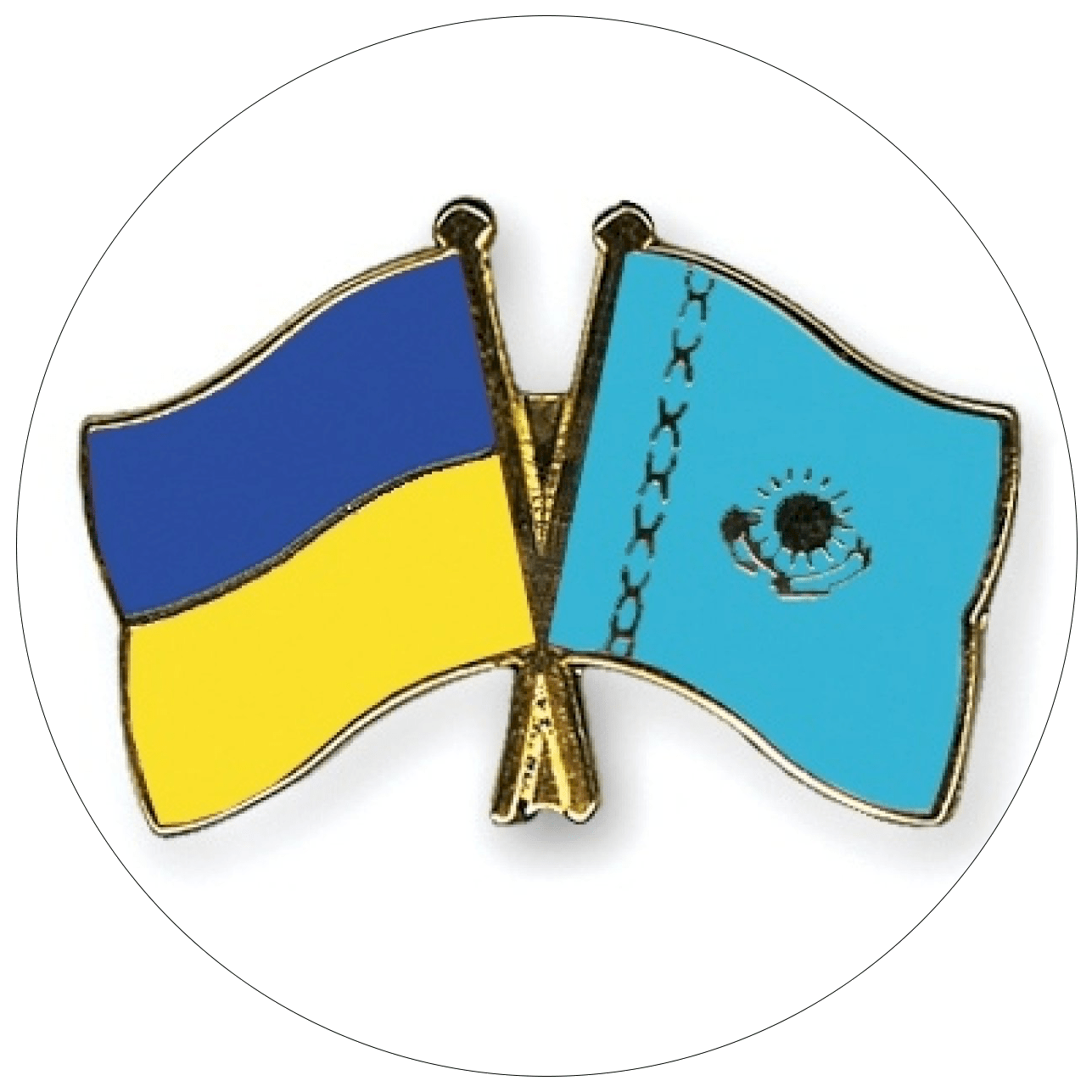The army of allies
What is happening today in the “family of sister nations”? Is it rapprochement or estrangement behind the shield of political declarations? Is there a clear economic reason for the integration? The following article by Zhukov and Reznikova, Institute of World Economy of RAS (Russian Academy of Sciences) provides plenty of food for thought on this issue.
There are never ending attempts to create blocks and unions on the post-Soviet territory in order to develop regional economic cooperation, and possibly economic integration in future. One of the unions exists mostly due to inertia of the previous relations, contours of others can only be barely seen. The integration rhetoric develops parallel to the processes of disintegration, which sometimes takes form of declared and undeclared trade-economic wars.
Harsh conditions for development
All of the post-Soviet economies are in harsh conditions for market economy development. Jeffrey Sax suggested a cumulative index that would assess 25 transition economies of the CIS, Baltic, Eastern and Central Europe based on a range of key economy-geographical factors (see table 1). Eurasia doesn’t have a common boarder with the developed economic centres of Europe and Asia – Western Europe and Japan. The perimeter of Eurasia is formed by countries of poor or, at the most, moderate development. The distances between the post-Soviet and developed countries (as well as between some of post-Soviet countries) reach several thousand kilometres, which significantly increases transaction costs. Armenia, Azerbaijan, Kazakhstan, Kyrgyzstan, Tajikistan, Turkmenistan and Uzbekistan are the countries that don’t have a direct outlet to the international trade routes. It means that the costs of external trade for these countries are higher.
The most prosperous transit economies have a better index of geographical conditions. The post-Soviet economies are not among them. Only Byelorussia and Ukraine received 3 points, and Moldova, Russia and Turkmenistan received 2 points out of 6.
The cumulative index of geographical conditions for development of Kazakhstan is 1 point. Kyrgyzstan, Tajikistan and Uzbekistan, as well as the trinity of post-Soviet countries of Southern Caucasus, are in the worst geographical position. Besides, the unfavourable geographical-economic conditions impede the development of economic contacts among these countries.
All of the post-Soviet countries have a low or moderate level of income per capita (see table 2). In 2006 based on the official exchange rate GDP per capita in the most developed post-Soviet countries was between 5200 USD (Kazakhstan) and 6890 USD (Russia). In Tajikistan, Kyrgyzstan and Uzbekistan GDP per capita were between 410 USD (Tajikistan) and 610 USD (Uzbekistan). Usually less developed countries don’t integrate with each other. Addition obstacle for development of economic cooperation is the great difference in the levels of economic development.
However, the main obstacle for the cooperation is not even the difference in the levels of development but the types of development. The experience of other countries shows that manufacturing industry, which has a net of upstream and downstream inter-industry connections, is the engine for trans-border cooperation. In all of the post-Soviet countries the manufacturing industries are undeveloped (except for metallurgy). The share of mechanical engineering industry in GDP and especially in exports is low and continually decreases (see table 2).
Most of the post-Soviet countries are approximately equally endowed with main factors of production. All of them have a surplus of labour, deficit of capital and are on a low level of technological development. Even Russian economy, which is the most developed one, is only at the beginning stages of high-tech development; and most of it is concentrated in the military production complex. Thus, the structural complementation in economic structure as well as in factors of production is absent among the post-Soviet economies. Kazakhstan and Russia are slightly outside the typical situation; the countries obtained some free capital resources due to increases of the oil and gas driven incomes in the recent years. Besides, Russia will soon face deficit of labour because it has entered the phase of decreasing population.
Let’s look more closely at the trade and flow of capital and labour in the post-Soviet territory.
Significance of trade
Currently the main form of economic relations on the post-Soviet territory is trade. The general indicator of significance of trade is the share of exports within the region in total exports. Table 3 shows the dynamics of this indicator during 1996 – 2006 for GUAM (Georgia, Ukraine, Azerbaijan, Moldova), Central Asia, EEC (Eurasian Economic Community), UEA (United Economic Area) and CIS.
The table also allows comparing the indicators of trade significance of the blocks of developing countries with trade and economic blocks of developed countries.
Considering the table above, we can conclude that the hopes of transforming the post-Soviet territory into a trade-economic block like EU or NAFTA, because for the latter organizations the share of total exports that stays within them is 56 – 67%, while this indicator is below 20% for the CIS. The arguments that during the USSR the republics were as deeply integrated as the EU and the current decline in the trade is only temporary don’t take into account that the connections between the republics were sustained by totally non-economic system.
The most artificial economic unions on the post-Soviet territory are GUAM, and lately Central Asia. Generally, the members of GUAM have nothing to trade with each other. And the five countries of Central Asia also don’t have the necessary prerequisites for increasing the mutual trade. With the increases of exports of oil and gas from Kazakhstan and Turkmenistan, aluminium and cotton from Tajikistan, gold and cotton from Kyrgyzstan and Uzbekistan the share of the regions internal trade will decrease. Due to its geographical position, Kyrgyzstan is most interested in close cooperation within the region. The reason is that goods from Kyrgyzstan can reach the Russian market only through the neighbours’ territory. However, as shown below, many Chinese products, presented as Kyrgyzstan’s goods, enter the markets of Russia and Central Asia.
Among the unions on the post-Soviet territory the CIS enjoys the highest trade compatibility of its members. After dramatic decrease in 1990s, the volume of trade among its members has stabilized. During 2000 – 2004 the weight of the regional export stabilized on 20 – 21%. This indicator was same as for ASEAN (Association of South-East Asian Nations), until it decreased to 17 – 18% in 2005 – 2006.
The CIS unites very different economies by scale and structure; therefore, to make any more conclusions on the significance of trade within the organization a more detailed research is needed. In Byelorussia, Georgia, Kyrgyzstan, Moldova and Turkmenistan the export to post-Soviet countries makes up 40 – 50% out of the total national export (see table 4). As the price of natural gas increases, the significance of post-Soviet markets will grow for Turkmenistan, which mainly exports its gas to Ukraine. After a period of decline the significance of regional trade is also growing for Kyrgyzstan and Uzbekistan, while for Georgia and Moldova the significance of the post-Soviet markets is decreasing.
The share of exports to the markets of the CIS is stable at 1/3 of national exports for Ukraine. The oil exporters Azerbaijan, Kazakhstan and Russia are primarily oriented to the markets outside the post-Soviet territory. The expected growth of gas and oil production and exports will strengthen the orientation of Azerbaijan and Kazakhstan towards the world markets. Tajikistan is also taking on the same orientation; its exports mainly consist of unprocessed aluminium and cotton. Most of Armenian export also goes outside the CIS.
Russia is still the main centre of economic gravitation in the CIS. However, due to re-orientation of the post-Soviet economies, including the Russian economy, to other markets, Russia’s role as a centre of trade gravitation is decreasing. Currently, exports into Russian market are very important for Byelorussia – 35% of national export in 2006 (see table 5). Before 2006 almost 1/3 of Moldova’s exports were going to Russia. After Russia prohibited imports of Moldova’s vine and limited imports of Moldova’s agricultural products in 2006, the exports to Russian market decreased by 48% compared to the previous year and were only 17% of the total exports of Moldova. Interestingly, Moldova’s total export has only decreased by 3,4%.
Due to limitations on imports from Georgia Russian market’s share in Georgian exports decreased to only 8% during the same year. Although, the Georgian export to Russia decreased by 51%, the country’s total exports increased by 15%. However, one should notice that these assessments are based on the official statistics, the quality of which has significantly decreased recently. About 1/5 of exports from Uzbekistan and Ukraine go to Russia. Russian market occupies from 1% to 10% of exports of Azerbaijan, Kazakhstan, Tajikistan and Turkmenistan.
The trade flows in within the EEC and UEA are mainly oriented towards Russia. In 2006 93% of the regional exports of UEA went to Russia. The trade relations between Ukraine and Byelorussia had 4,1% of the regional exports, Ukraine – Kazakhstan – 2,4%, Kazakhstan – Byelorussia – 0,5% (see figure 1).
The exports within the EEC is even more oriented towards Russia. The exports flows within the EEC that were not going to Russia amounted only 3,1% in 2006 (see figure 2).
Obviously, trade-economic unions that are so asymmetrical cannot be very stable. Generally, all of the members of these blocks trade almost exclusively with Russia, and thus are interested in developing bilateral relations.
(To be continued in the next issue)


 Поддержать
Поддержать
 Smart
Smart  Бизнес
Бизнес  Культурная среда
Культурная среда  Общество
Общество  Политика
Политика  "Законы XII таблиц"
"Законы XII таблиц"  Досье и мифы
Досье и мифы  Асар в Украине
Асар в Украине 


Комментариев пока нет